By Amanda Rose Newton
Summer in Florida is synonymous with vibrant colors and flourishing gardens. While the intense heat and humidity can be challenging, many native and staple plants thrive in these conditions, providing a burst of color and life to any landscape. Here’s a guide to some of the best blooming plants for June in Florida, along with care tips to keep them healthy and vibrant.
Native Plants
Firebush (Hamelia patens)
Firebush is a perennial shrub known for its tubular, bright red-orange flowers that attract hummingbirds and butterflies.
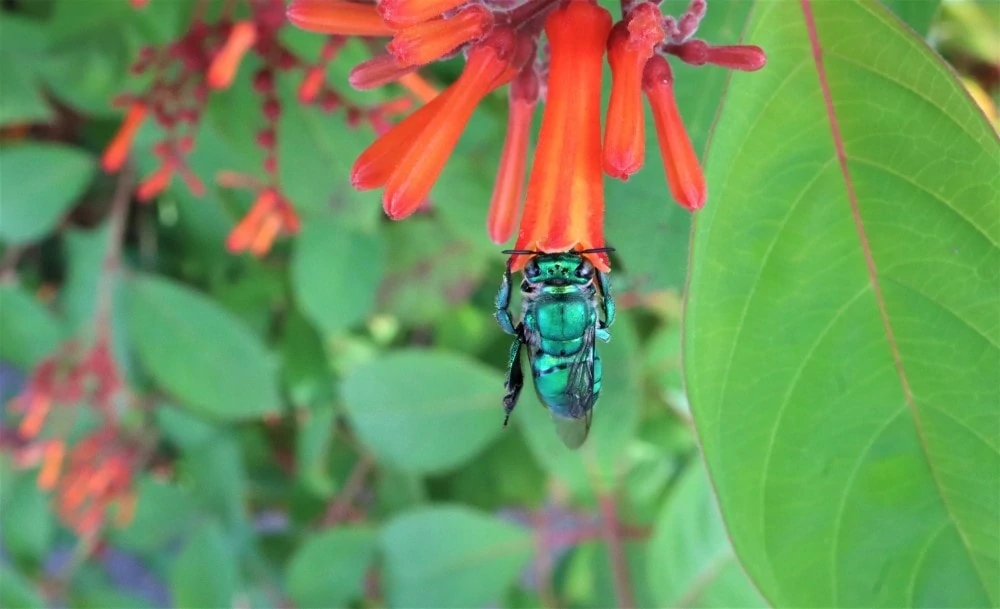
Care Tips:
Sunlight: Full sun to partial shade.
Water: Drought-tolerant once established but benefits from regular watering during prolonged dry periods.
Soil: Well-drained soil.
Maintenance: Prune lightly to maintain shape and encourage new growth.
Coreopsis (Coreopsis spp.)
Coreopsis, also known as tickseed, is Florida’s state wildflower. It features cheerful, daisy-like blooms in shades of yellow and sometimes pink.
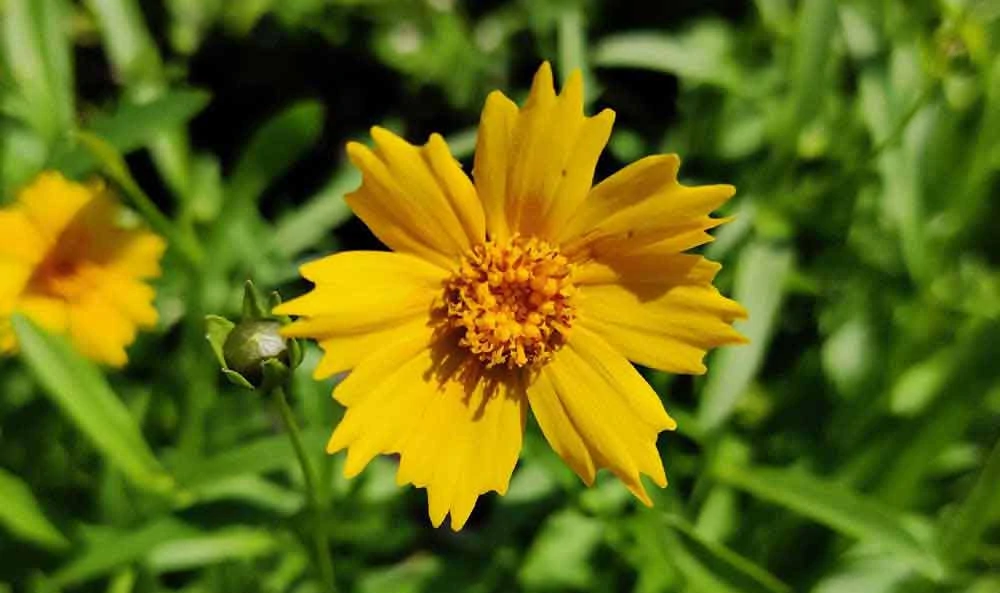
Care Tips:
Sunlight: Full sun.
Water: Water regularly but allow the soil to dry out between waterings.
Soil: Well-drained, sandy soil.
Maintenance: Deadhead spent flowers to encourage continuous blooming.
Beach Sunflower (Helianthus debilis)
This fast-growing, sprawling groundcover produces bright yellow flowers and can withstand salty conditions, making it perfect for coastal gardens.
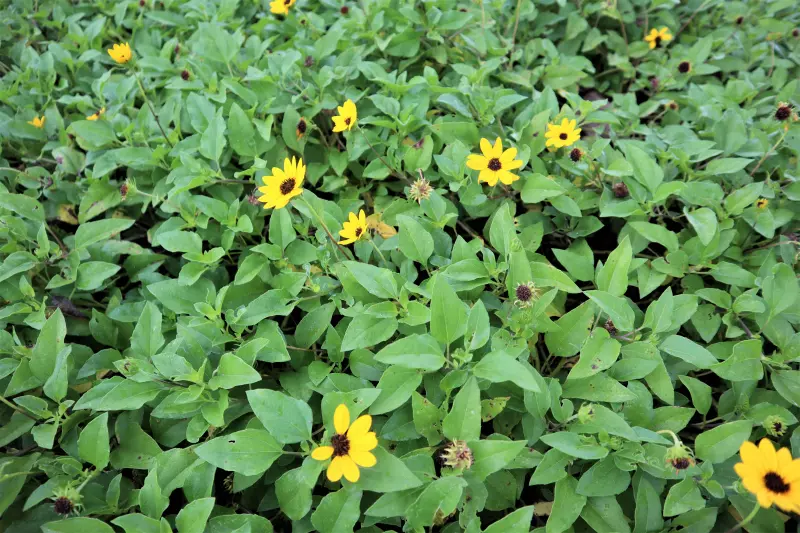
Care Tips:
Sunlight: Full sun.
Water: Drought-tolerant, occasional watering during dry spells.
Soil: Well-drained, sandy soil.
Maintenance: Minimal pruning needed; trim back to control spread if necessary.
Blanket Flower (Gaillardia pulchella)
Blanket Flower is a hardy, drought-tolerant perennial with bright red and yellow daisy-like flowers.
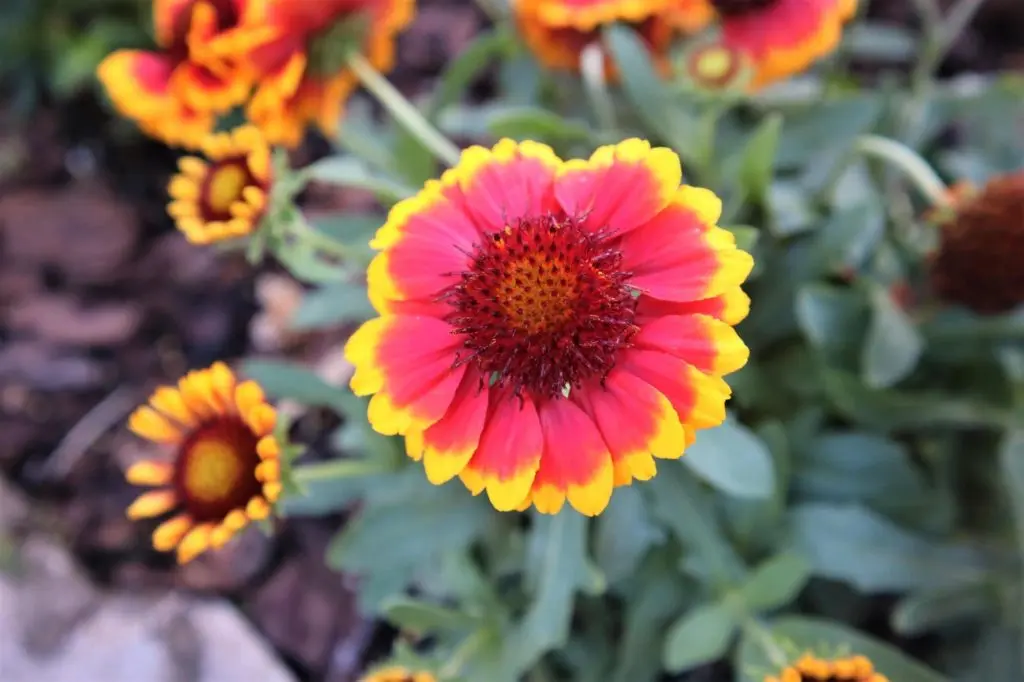
Care Tips:
Sunlight: Full sun.
Water: Water regularly but allow the soil to dry out between waterings.
Soil: Well-drained, sandy soil.
Maintenance: Deadhead spent flowers to encourage continuous blooming.
Scarlet Sage (Salvia coccinea)
Scarlet Sage is a native perennial with bright red tubular flowers that attract hummingbirds and butterflies.
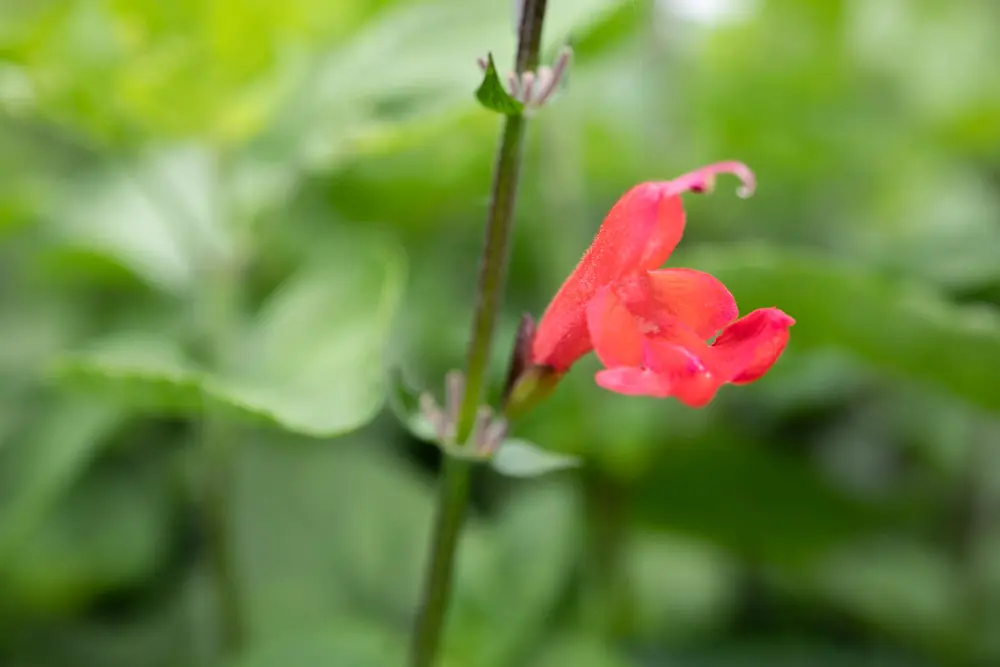
Care Tips:
Sunlight: Full sun to partial shade.
Water: Regular watering, more during dry spells.
Soil: Well-drained soil.
Maintenance: Deadhead to encourage more blooms and prevent self-seeding
Staple Florida Plants
Hibiscus (Hibiscus rosa-sinensis)
Hibiscus plants are a staple in Florida landscapes, known for their large, showy flowers in a variety of colors. Looking for a native to Florida Hibiscus? There are several, including swamp, scarlet, and rosemallow.
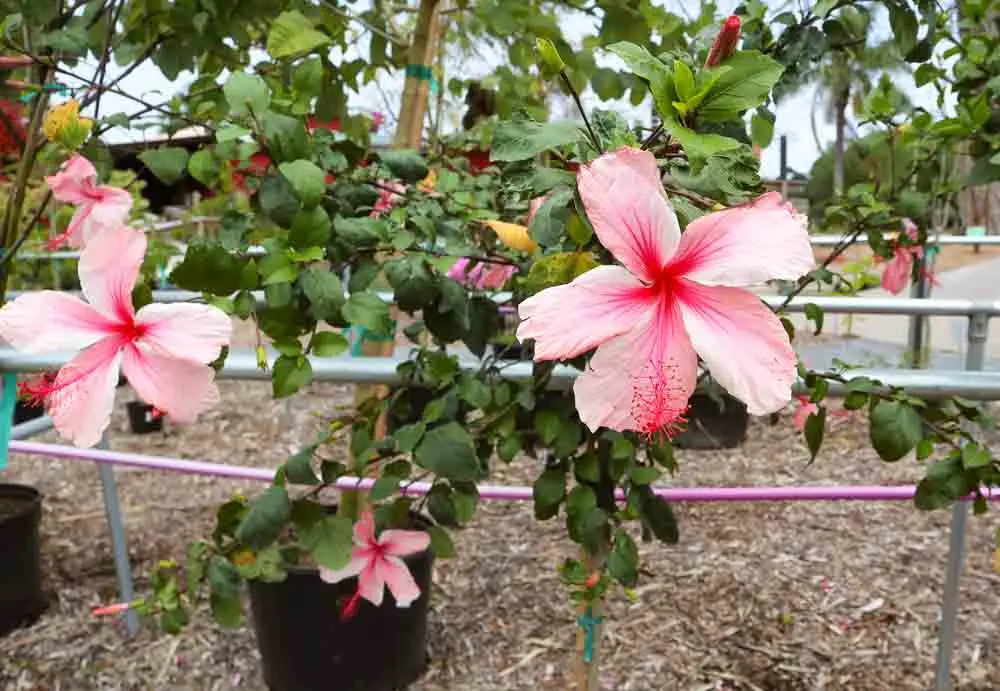
Care Tips:
Sunlight: Full sun to partial shade.
Water: Regular watering, especially during dry periods.
Soil: Well-drained soil enriched with organic matter.
Maintenance: Prune to shape and remove dead or damaged branches; fertilize regularly with a balanced fertilizer.
Bougainvillea (Bougainvillea spp.)
Bougainvillea is a vigorous climber with vibrant bracts in shades of pink, purple, red, and orange.
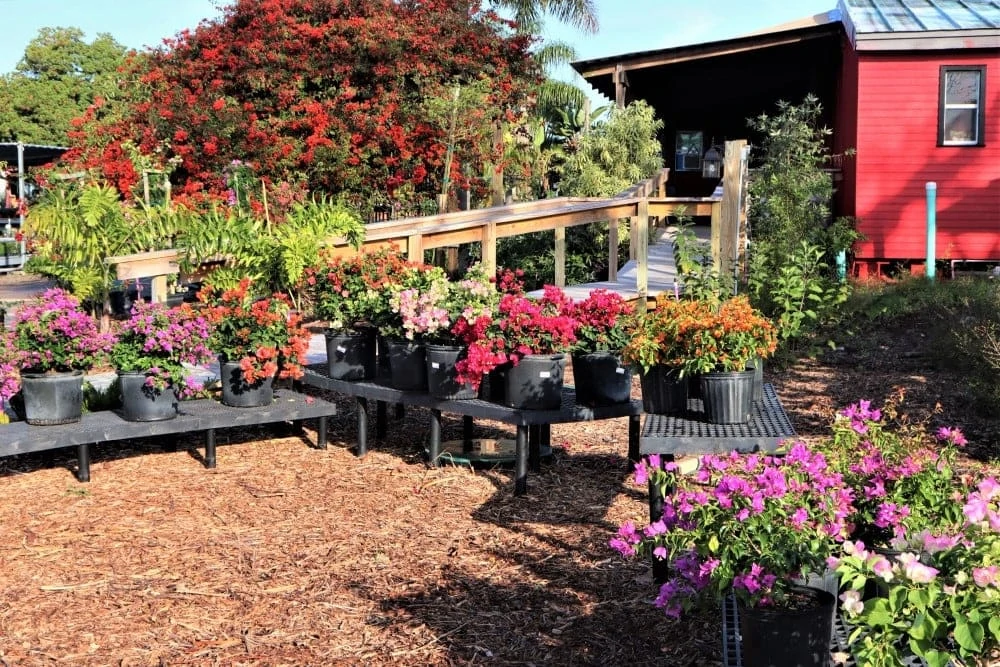
Care Tips:
Sunlight: Full sun.
Water: Drought-tolerant once established; water deeply but infrequently.
Soil: Well-drained soil.
Maintenance: Prune to control size and shape; handle with care due to thorns.
Plumbago (Plumbago auriculata)
Plumbago is a hardy shrub with clusters of sky-blue flowers that bloom profusely throughout the summer. Naturally occurring blue hues in flowers is a rarity, making plumbago especially treasured.
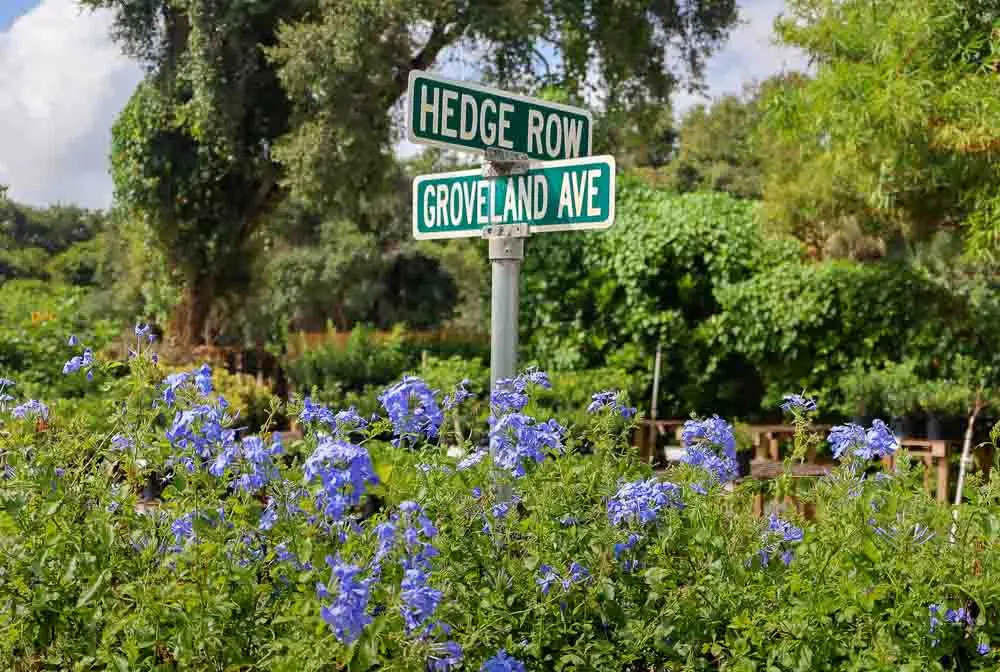
Care Tips:
Sunlight: Full sun to partial shade.
Water: Moderate watering, more frequent during dry spells.
Soil: Well-drained soil.
Maintenance: Light pruning is typically required to maintain shape.
Ixora (Ixora coccinea)
Ixora is a tropical shrub with clusters of bright red, orange, pink, or yellow flowers that makes a nice hedge.
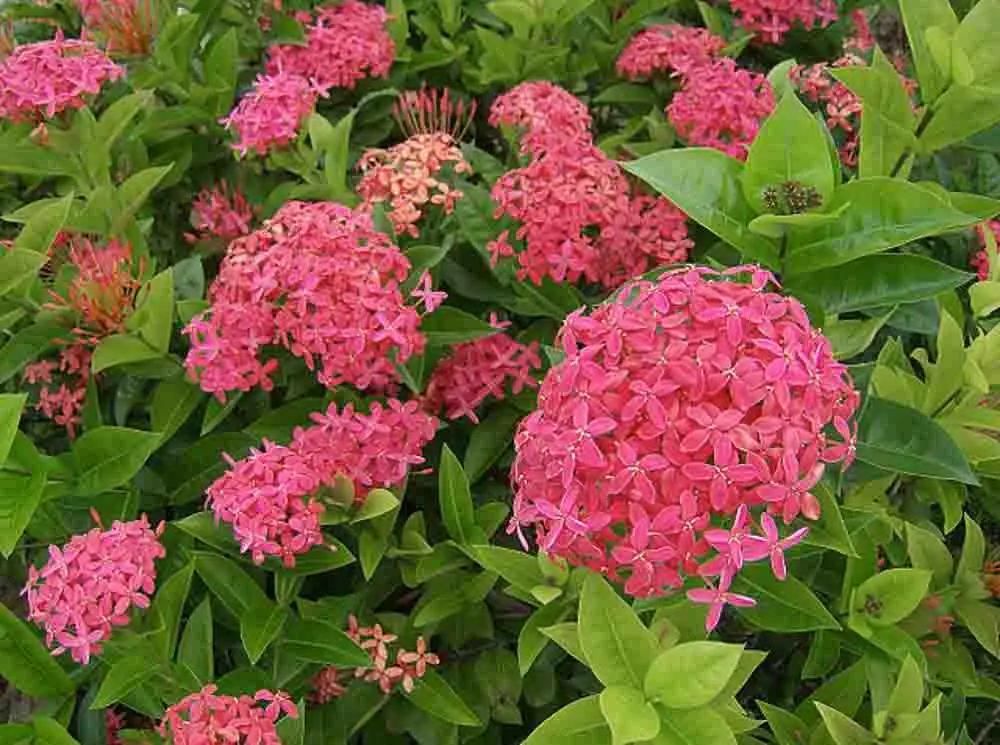
Care Tips:
Sunlight: Full sun to partial shade.
Water: Regular watering, especially during dry periods.
Soil: Well-drained soil enriched with organic matter.
Maintenance: Prune to maintain shape and encourage bushiness.
Lantana (Lantana camara)
Lantana is a hardy perennial with clusters of small, brightly colored flowers in shades of yellow, orange, red, and pink. This butterfly favorite also comes in two native to Florida forms, buttonsage and pineland.
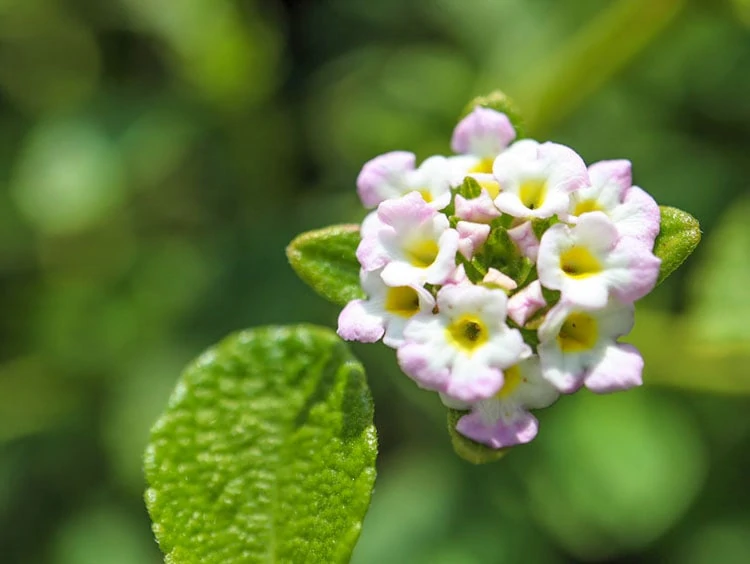
Care Tips:
Sunlight: Full sun.
Water: Drought-tolerant once established; water regularly during dry spells.
Soil: Well-drained soil.
Maintenance: Prune to control size and shape; deadhead to encourage more blooms.
General Care Tips for Blooming Plants in June
Mulching: Apply a layer of mulch around the base of plants to retain moisture, suppress weeds, and keep roots cool.
Watering: Water plants early in the morning to minimize evaporation and allow foliage to dry out, reducing the risk of fungal diseases.
Fertilizing: Not in June! Remember, to protect the Indian River Lagoon it is advised to cut fertilizing during the rainy season months, May-October.
Pest Control: Regularly inspect plants for pests and diseases. Choose natural treatments as needed, following label instructions.
By selecting native and staple Florida plants that bloom in June, you can create a garden that not only withstands the summer heat but also bursts with vibrant colors. With proper care and maintenance, these plants will thrive, providing beauty and enjoyment throughout the season.


